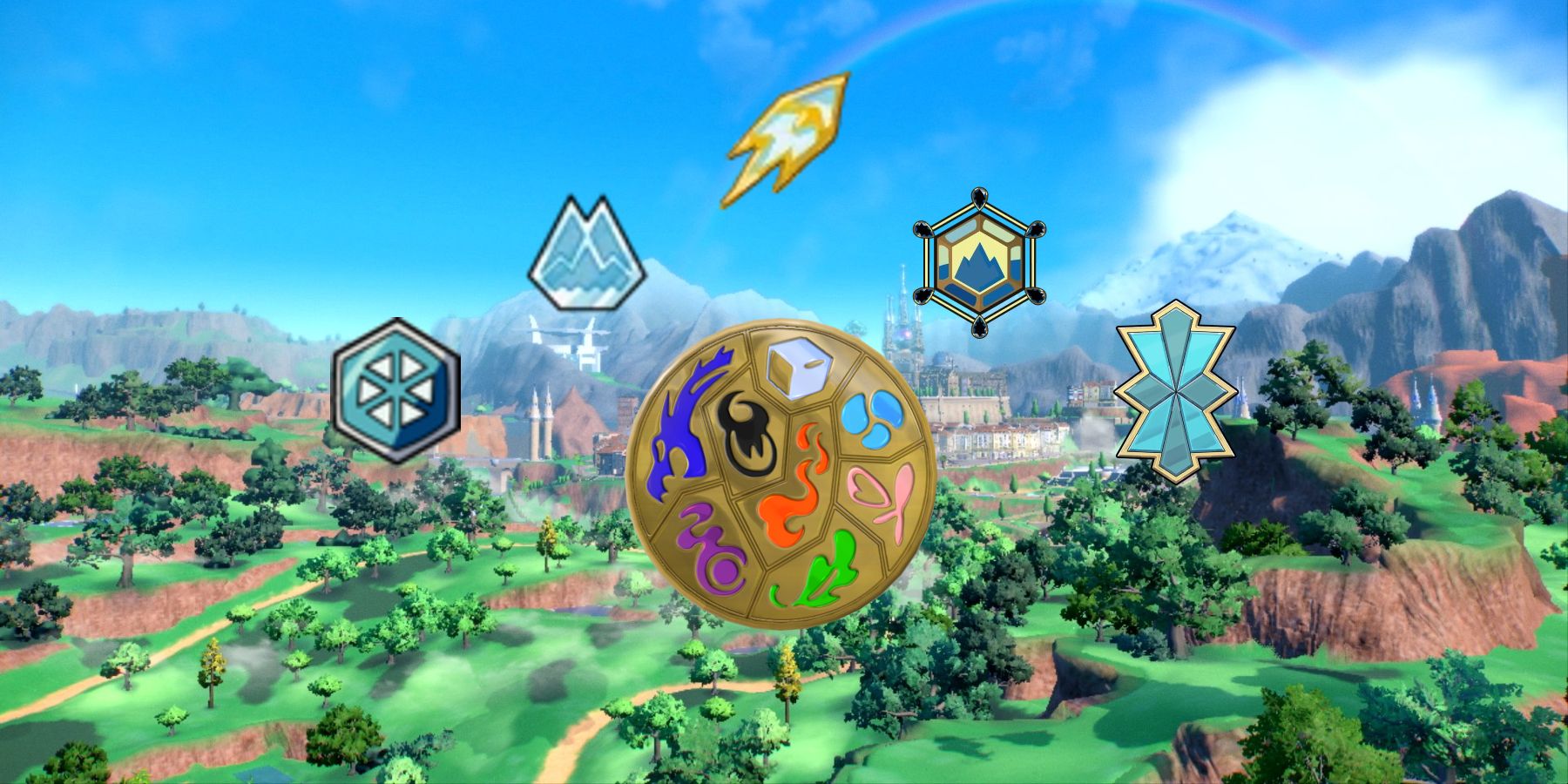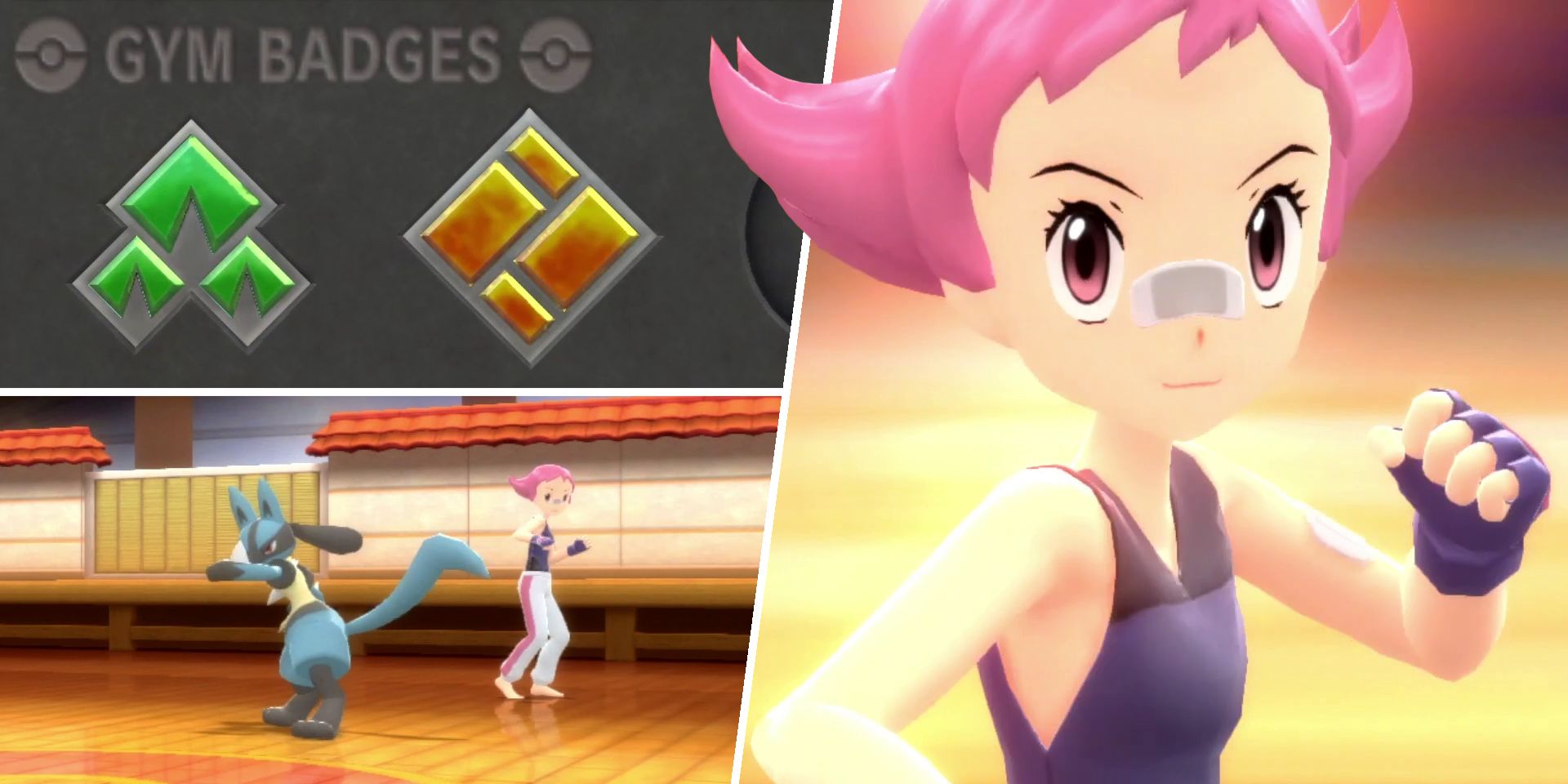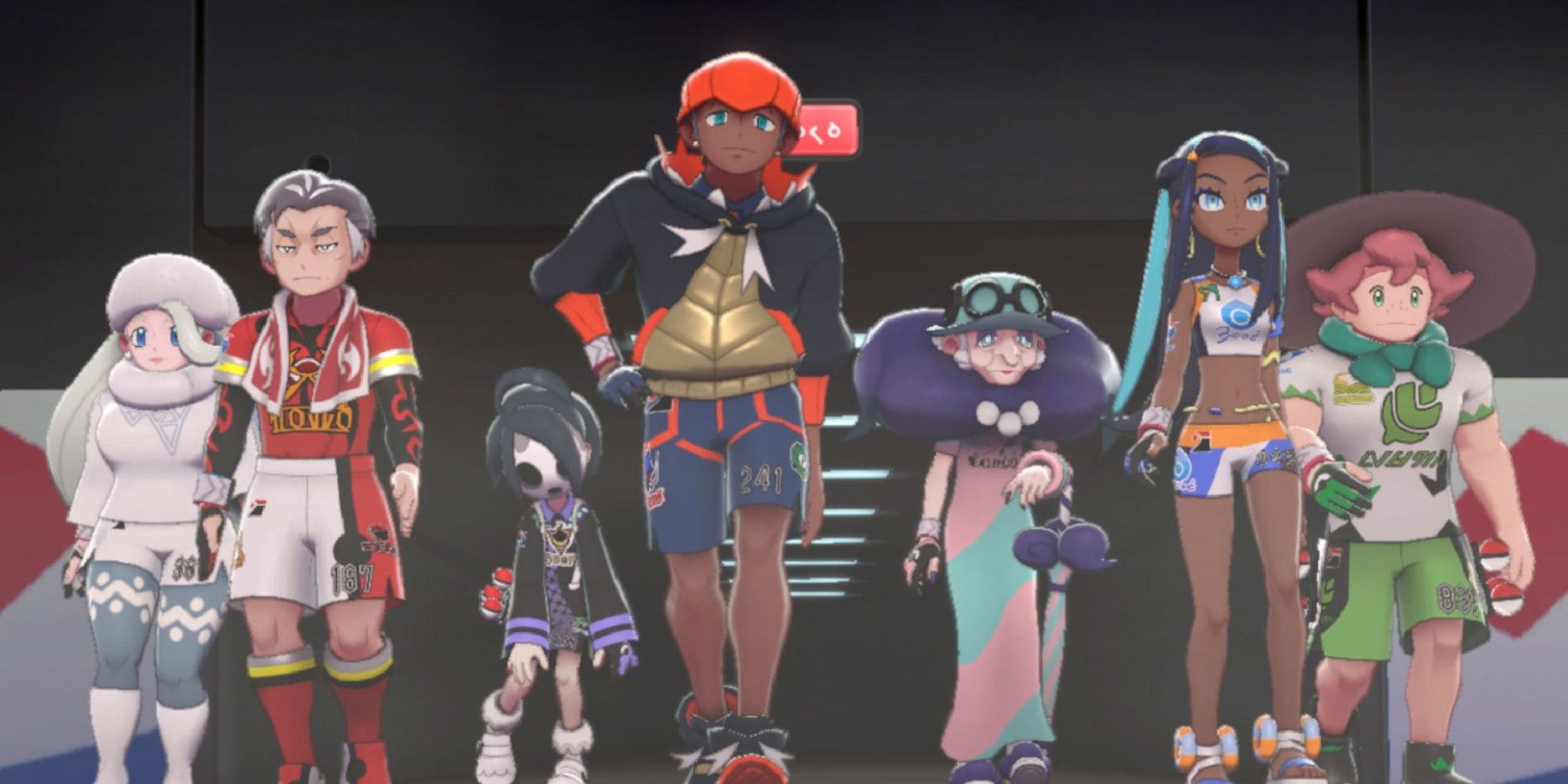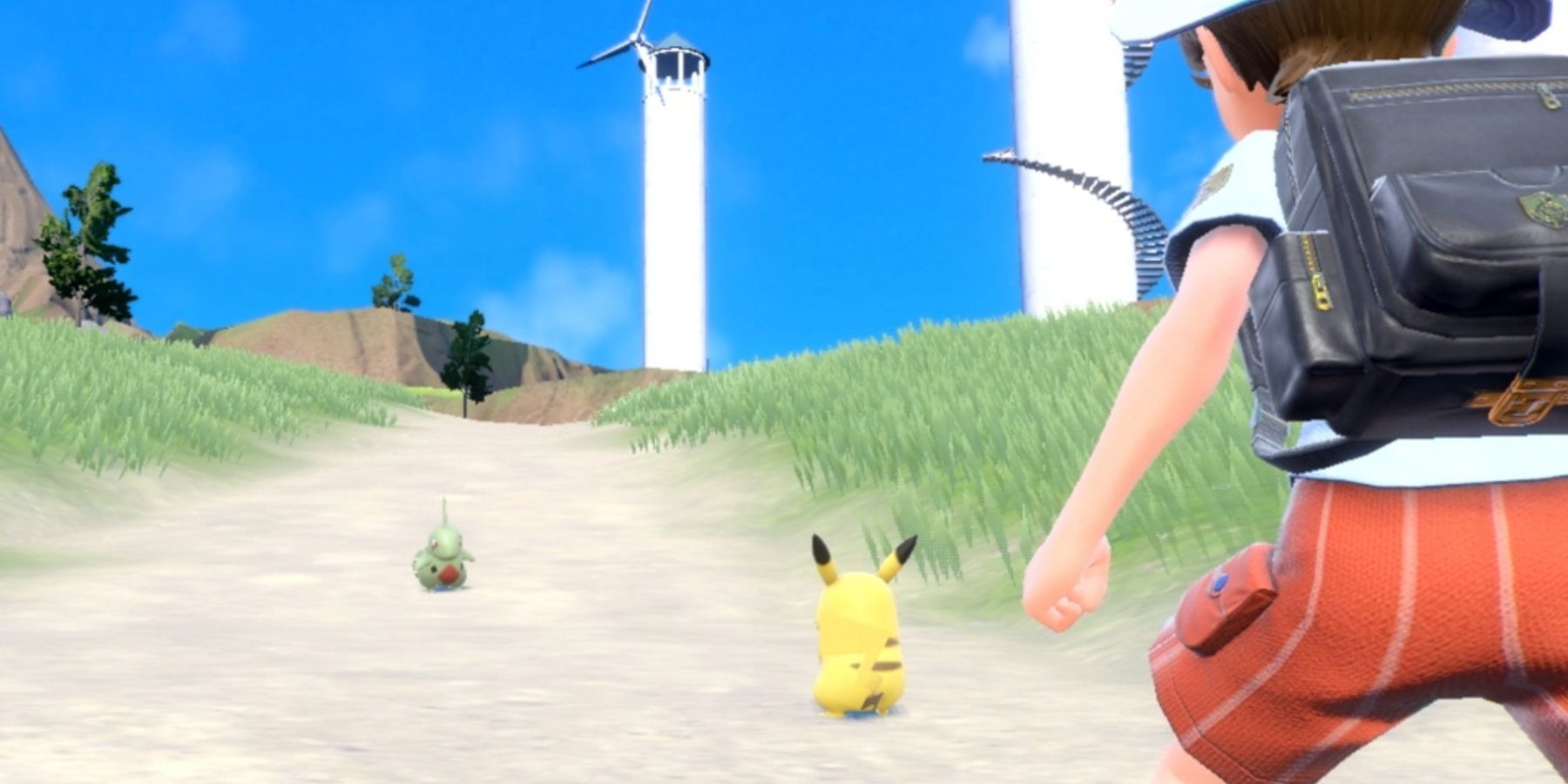Pokemon Scarlet and Violet promise to be an interesting experiment for Game Freak. After the one-two punch of Pokemon Brilliant Diamond and Shining Pearl followed by Pokemon Legends: Arceus, Scarlet and Violet were announced on Pokemon Day 2022 as the beginning of Generation 9. Both titles are a potentially big step forward, featuring a fully fledged new region with a seamless open world. Yet the names Scarlet and Violet suggest a return to form, reminiscent of the Red and Blue versions that made their international debut in 1998.
The Legend of Zelda: Breath of the Wild showed how successful a modern open-world project that reimagines the tenets of a classic Nintendo franchise can be. After Pokemon Legends: Arceus' critical and fan acclaim earlier this year, the future for Scarlet and Violet looks even brighter. If the games do mix a lot of classic and modern elements, one idea they should return to is individualized Gym badges, as an extension of its major characters' personalities.
Gym Challenges and Badges In Early Pokemon Games
The original Pokemon Generation on Game Boy set a number of standards for the franchise, including the underlying roadmap of conquering eight Gyms as part of the Kanto region's Pokemon League. Each Gym across the region is headed by a leader who specializes in a given type, such as Brock the Rock-type expert and Misty the Water-type user. After defeating all eight Gyms, players can make their way to Victory Road and Indigo Plateau; housing the Elite Four and Champion.
Kanto's Gym challenge let players tackle some of its Leaders out of the intended order, and it would come to reveal that the first encountered Gym in Viridian City is housed by its eighth Leader — Team Rocket boss Giovanni. Generation 2's Johto region was unique in that it's directly connected to Kanto, sharing its Indigo Plateau League. Each of its eight Gyms were based on different types than in Kanto, and players could revisit the original eight Gyms after three in-universe years to see how they'd changed.
After Generation 2 came four more Leagues, with Gym types seeing repeats. As Gym Leaders are among the most notable NPCs in each game, players spend at least a little time getting to know their personalities and acclaim around the region. Most of them cleanly fit character archetypes, and often the different badges they hand out reflect their different approaches as much as they do the style of their homeland.
Fighting-type Gyms are a good example. Chuck's Storm Badge is a bare fist reflecting his heavyweight style, and his Gym puzzle that involves pushing rocks; Brawly's Knuckle Badge is like a boxing glove, befitting the Omega Ruby and Alpha Sapphire redesign of his Gym as a literal gym; and Korrina's Rumble Badge looks like a pair of fists whizzing past one another, emblematic of her interest in rollerskating and just one example of the 3D badge depth seen in Generation 6. A similar analysis could be applied to every typing, and the time skip between Black, White, and their sequels show new Gym Leaders with their own types get unique badge designs.
How Modern Pokemon Games Have Changed
Pokemon Sun and Moon abandoned the Gym format in favor of Alola's Island Challenge. This was much appreciated by fans after six consecutive Generations, instead putting a focus on the region and its traditions by having players complete tasks for a smaller number of Trial Captains. Each trial ends with a fight against a Totem Pokemon; large and empowered monsters with the ability to call in allies; and instead of badges the player earns Z-Crystals that facilitate use of the region's battle gimmick.
Because Sun and Moon's trials focused on events like learning dances at the peak of Wela Volcano or exploring the Abandoned Thrifty Megamart, players arguably got a better grasp on both Alola and its key characters than they could have with the simple Gym structure. Even though Professor Kukui builds a Pokemon League for Alola at the end of the games, and Ultra Sun and Ultra Moon added a "Gym" inspired by Kanto's Vermilion City, the Island Challenge was a good change of pace.
Following Generation 7, Pokemon Sword and Shield brought back Gyms reflecting the Galar region's focus on professional sports. There are still eight Gyms, but the individual "puzzles" before each Leader all open into the same type of battle on a pitch that leaves room for Dynamax encounters. The leaders still have their own personalities, but they all wear sanctioned uniforms and hand out badges that are pieces of a single medal granting access to the final event in Wyndon City.
These Badges also eschew individual names in favor of their typings; Fire Badge, Rock Badge, etc.; and this uniformity may be emblematic of why the story in Generation 8 was less appealing to many - alongside elements like the underwhelming villain reveal of Chairman Rose. Even the spin-off mobile game Pokemon Masters EX injected more life into its five Badges, having them be based on a series of values like tranquility or patience.
Scarlet and Violet Can Better Personalize Its NPCs
There's nothing to suggest Pokemon Scarlet and Violet are bringing back Gyms based on their reveal trailer. Using Sun and Moon as an example, it might even be better for Generation 9 to abandon the Gym format again, leaving room for a new system befitting its Spain-inspired region. Yet the game's seeming "back to basics" approach points to Gyms being likely, and the open-world formula offers ways it can improve. Probably the most interesting idea that Game Freak could attempt is having Gyms be available in any order, thus giving Gym Leaders scaling teams depending on when they're encountered.
By not funneling players into subsequent planned battles, the story around each town where a Gym is based can instead focus on its Leader's role in the area — anyone could be the "first" Gym Leader, but that character will always have an individual arc regardless of when they're fought. Bringing back personalized badges unlike those in Sword and Shield would enhance the approach, letting Pokemon Scarlet and Violet's characters come into their own with a memento players can remember them by.
Pokemon Scarlet and Violet are scheduled to release in late 2022 for Nintendo Switch.




